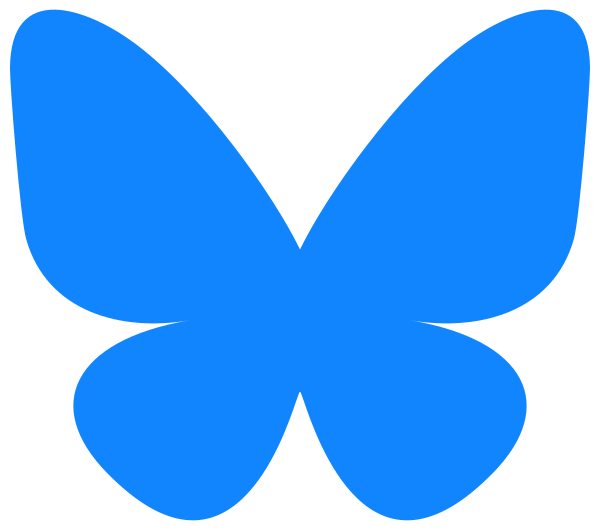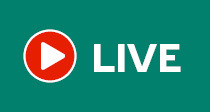
Ukrainian Atlas project aims to shield 1,300 km of frontline from Russian drone attacks. Serhiy Zgurets’ column
Ukrainian company Kvertus has presented a large-scale project called Atlas. The project's goal is to create an integrated system to protect soldiers on the frontlines, as well as deeper within the front, from Russian unmanned aerial vehicles. But first, let's talk about the situation on the front
Frontline situation
Currently, Russian forces have somewhat reduced pressure on various fronts, likely regrouping or seeking new forces and resources for offensive actions. At the same time, the Ukrainian Armed Forces have carried out several counterattacks on different sections of the front, and it can be said that they have managed to slow down the pace of the Russian advance.
Kursk region
The dynamics in the Kursk region are extremely interesting and important. To the south of Sudzha, Ukrainian forces have expanded the controlled area, thus securing logistics for Sudzha itself, which is connected by a transport route from Sumy. There has already been progress by several kilometers, which is crucial for the security of this section.
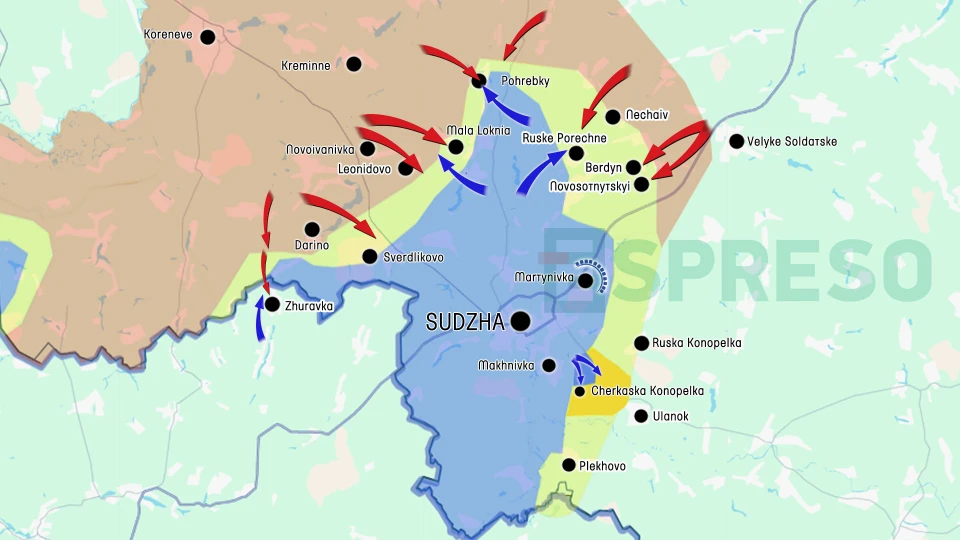
We know that the counterattacks by the Ukrainian Armed Forces began from Makhnivka, which is 3 km from Sudzha. Russian troops carried out attacks on Makhnivka, trying to break through to Sudzha. From Makhnivka, there were also assault operations towards the settlements of Cherkaska Konopelka and Ulanok. Currently, there is information that the Ukrainian Armed Forces are holding Cherkaska Konopelka and Fanaseyevka. These areas are dangerous for Russian troops because, if Ukrainian forces advance further, they could cut off a certain Russian military group that was carrying out attacks near Makhnivka.
In the Kursk region, operations are ongoing in other areas, not just in the southeast. There are also battles to the west and north of Sudzha. Changes are occurring on the map, as seen on DeepState, with around 2 square kilometers of change. This is also very important, given the dense defense and offensive actions from both sides.
Currently, it can be said that Russian forces have once again returned to using North Korean soldiers. On Friday, February 7, North Korean forces began another assault on the positions of Ukraine's 47th Separate Mechanized Brigade Magura. At that time, the brigade used artillery, HIMARS, and cluster munitions. Russian troops carried out storming attacks, but all of them were repelled. There were several long, powerful assaults with a significant number of North Korean troops, but they were all stopped. This confirms that with the use of artillery, drones, and systematic countermeasures, it is possible to effectively destroy the invading Russian forces. This was demonstrated by Ukrainian military forces from the 47th, 82nd, and 92nd brigades, who showed effective work in eliminating Russian troops and defending this foothold.
Meanwhile, Russia is trying to use fiber-optic drones and, notably, is actively deploying guided bombs. On February 10, Ukraine's General Staff reported that Russian forces used a total of 138 guided bombs over the past day, with 69, nearly half, being used in the Kursk region. Currently, the Russian army is attempting to strike Ukrainian settlements in the Sumy region with guided bombs, thus affecting logistics between the Sumy and Kursk regions. However, we take these risks into account, and this does not have a significant impact on the effectiveness of Ukraine's defense in the Kursk region.
Kupiansk sector
Currently, the Kupiansk sector is quite alarming. Recently, Russian troops carried out several crossings of the Oskil River and now have several footholds on the western bank. These include settlements such as Dvorichna, where fighting continues. Russian forces are also trying to strengthen their positions in other footholds, including the village of Zakhidne, south of Dvorichna, as well as the settlements of Novomlynsk and Fyholivka, located north of Dvorichna.
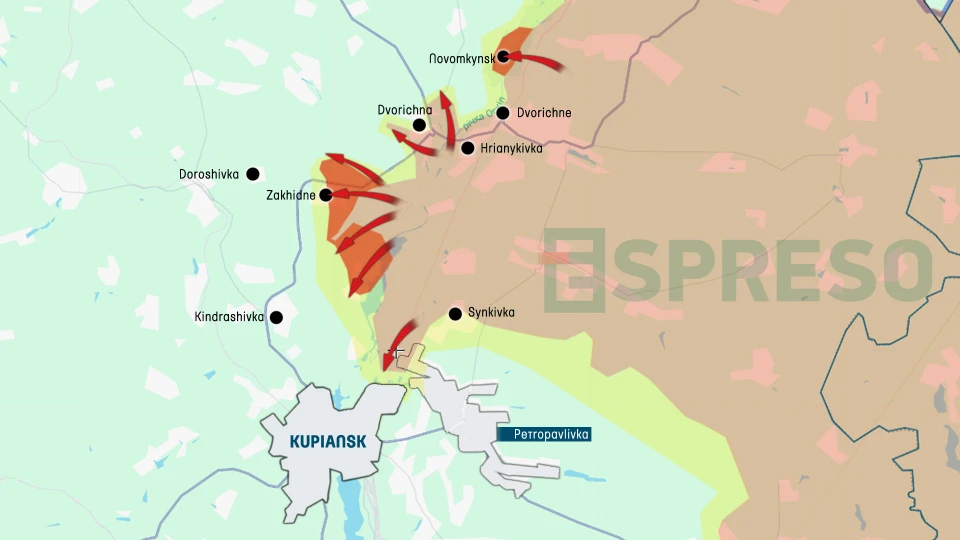
Ukraine Russia war live map, January 29 – February 5, Photo: Espreso
Additionally, they are trying to maintain and expand the foothold located directly near the Ukrainian-Russian border - the settlement of Topoli. Currently, Russian troops are attempting to unite these footholds, but this is extremely difficult, as to transfer the necessary forces to the western bank of the Oskil River, the invading Russian forces have to use ferry crossings, which are being destroyed. This significantly complicates the accumulation of forces, although they have indeed gathered some forces on the western bank. Therefore, the situation with Topoli is critical, as it is an attempt to secure logistics for this group from Russian territory. I hope the Russian army will not succeed in this.

There was information that Ukrainian units carried out regrouping, and reserves were being transferred to this sector. I believe this will help minimize the risk currently posed by these footholds on the western bank of the Oskil River.
Kurakhove sector
Another direction is, of course, the Kurakhove sector, which remains quite problematic. We are talking about the southern Kurakhove pocket, where Russian troops are trying to push Ukrainian defenders.

Ukraine Russia war live map, January 29 – February 5, Photo: Espreso
The map clearly shows the positions of both sides. There is a road from the captured Kurakhove towards Zaporizhzhia, with the settlement of Dachne located near it, which is held by Ukrainian forces, although much of the settlement is under Russian control. Currently, this pocket stretches up to Konstiantynopil, about 10 km, with the northern and southern flanks being approximately 4 km apart. Thus, in a 4 km by 10 km area, several Ukrainian brigades are holding defense, including the 37th Marine Brigade, which is highly effective in destroying Russian forces in this area, as well as the 5th Separate Assault Brigade, whose units are also operating in this direction.
Importantly, there are three settlements: Andriivka, Kostiantynopil, and Ulakly. Ukrainian defense is currently held in a triangular shape, and Ukrainian forces will slowly withdraw from Dachne, while Russian troops will attempt to capture Andriivka to break through from the north to Kostiantynopil and complicate the withdrawal of Ukrainian troops from this pocket.
For a long time, the 37th Brigade and other brigades have been effectively holding the defense, so it is unlikely that the Russian plans will succeed. I believe a planned withdrawal of Ukrainian troops will take place, especially since Ukrainian brigades in this area are inflicting significant losses on Russian troops.
New technological solutions for the Ukrainian Armed Forces
Next, we will talk about technological solutions that could influence the situation on the front lines. The Ukrainian company Kvertus recently presented a large-scale project called Atlas, aimed at creating a comprehensive system to protect military personnel on the front lines and at certain depths of the front from Russian drones. The defense line covered by the Atlas system would span 1,300 km if implemented.
Yaroslav Filimonov, CEO and co-owner of Kvertus, explained that the Atlas project combines both radio-electronic reconnaissance (RER) and radio-electronic warfare (REW). As part of the project, there is the Azimut RER system, a frequency locator that detects everything moving within a 30 km radius using communication signals. This system is highly accurate, with high sensitivity, and is currently comparable to leading American and German models. In 2024, Kvertus launched a new REW technology called Mirage, which creates an intelligent jamming signal. This is not just white noise blocking a 200 MHz frequency range; the system generates interference on active frequencies, as well as deeper noise levels that complicate the enemy's ability to detect these devices through RER. After testing Azimut and Mirage, the two systems were combined into a single ecosystem.
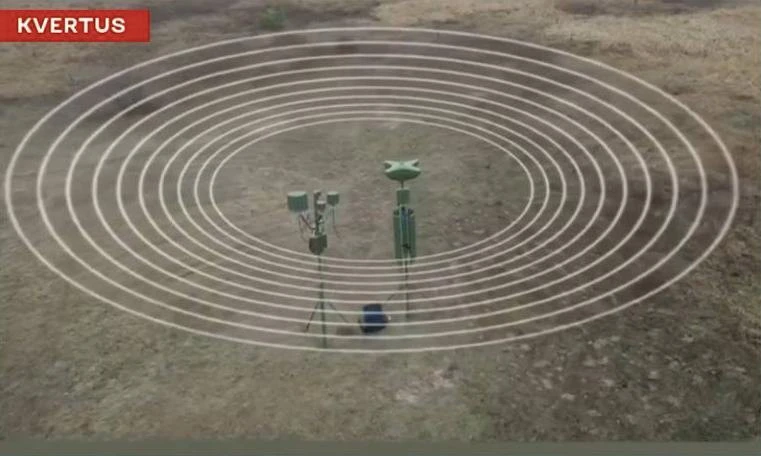
The co-owner of the company Kvertus noted that this is the first ecosystem that operates in automatic mode: it detects an enemy drone in motion and, by transmitting a signal to the REW system, neutralizes the target. Dozens of tests have been conducted at training grounds and various sections of the front. Therefore, the operation of these two systems together has proven highly effective, as this system provides dome protection, for example, against FPV drones at a distance of up to 2.5-3 km, depending on the terrain. This REW-RER ecosystem, firstly, can be remotely controlled from any point in Ukraine, and secondly, at different levels of REW and RER specialists, various access rights to specific devices, areas, and the entire network can be granted. It can be remotely managed both by a single device and by a thousand or more.

Filimonov emphasized that this system is a comprehensive REW-RER wall along the front line of combat, which will significantly reduce the percentage of drone hits on Ukrainian personnel, equipment, and positions. The system can be used both in manual and automated modes. The task of Kvertus specialists is to properly train the REW and RER specialists of the Ukrainian Defense Forces to use this complex, which will drastically reduce instances of friendly fire.
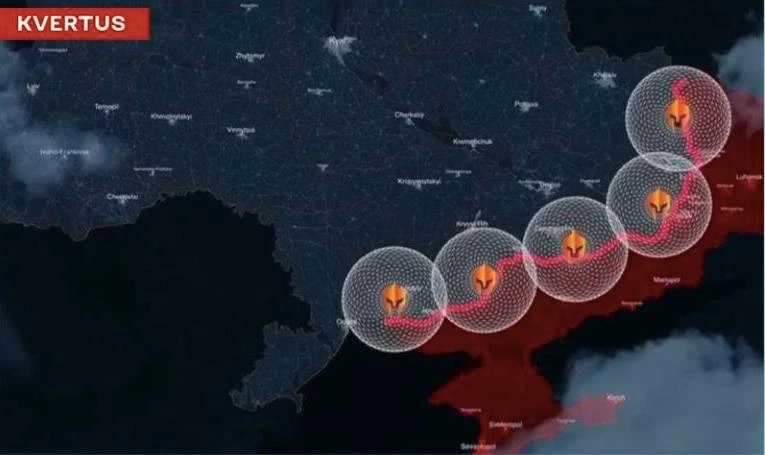
The CEO emphasized that the logic and philosophy of the Atlas project are based on the realization that, at a certain point, the state had insufficient funds prioritized for REW tools. Therefore, Kvertus decided not to wait but to get involved and organize the process, already involving well-known individuals, presenting and explaining the essence of the project — real physics working according to a specific solution.
Of course, there is an expectation that the state will join this project, but the main message is to unite and engage people, businesses, and charitable funds. To cover 1,300 km of the front, 260 Azimut systems and over 5,000 Mirage systems are needed — all of which will be integrated into one network, allowing for systematic management of REW and RER tools. There is hope that, by implementing this project, funds will gradually come in step by step. In the coming days, announcements will be made about opening accounts and donation platforms, where people can contribute to the fundraising effort.
- News









